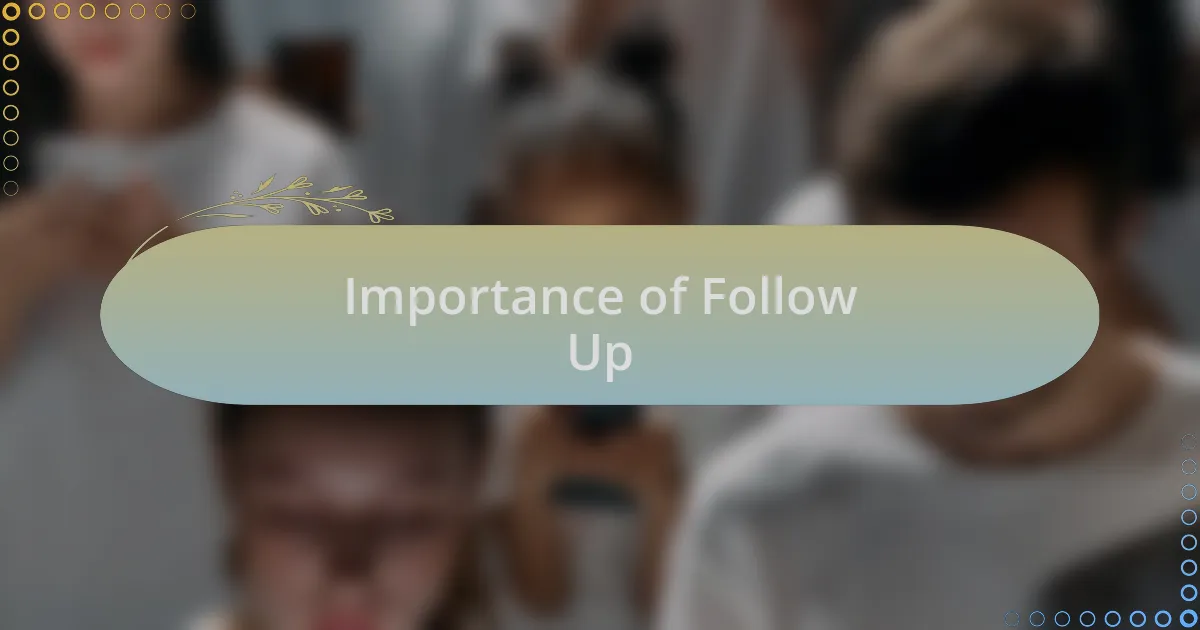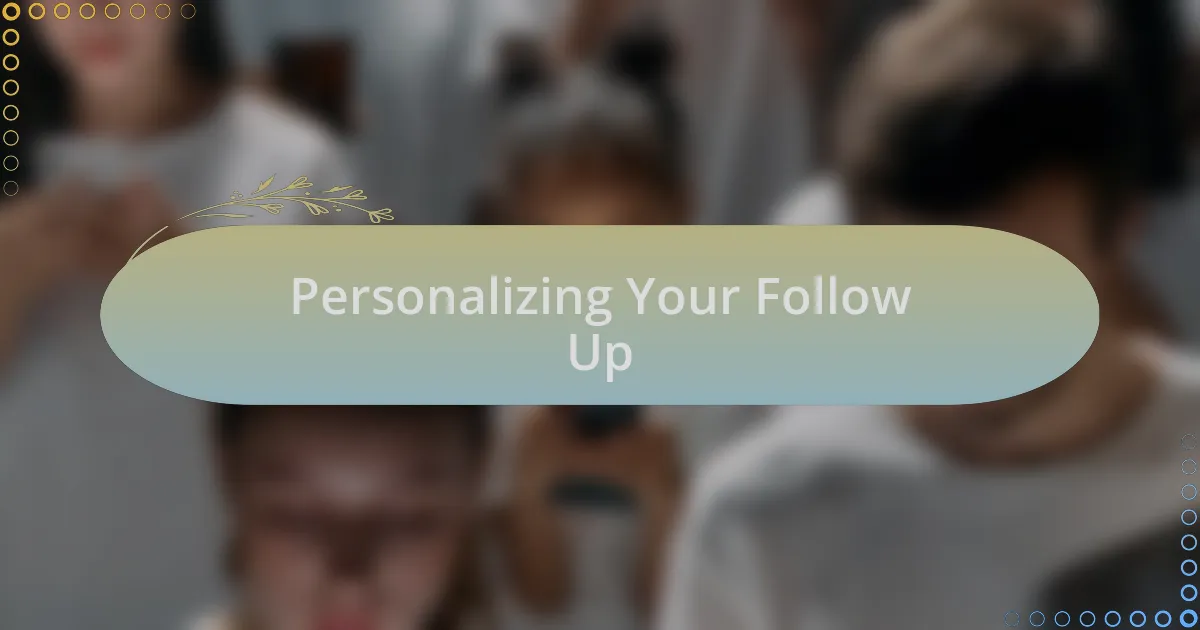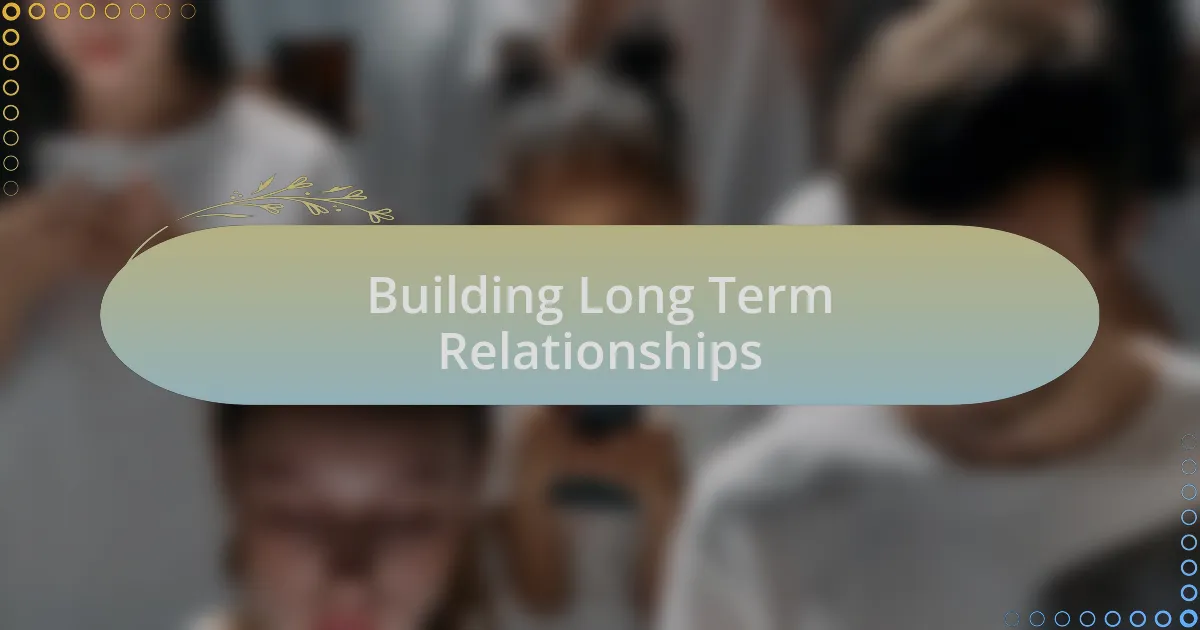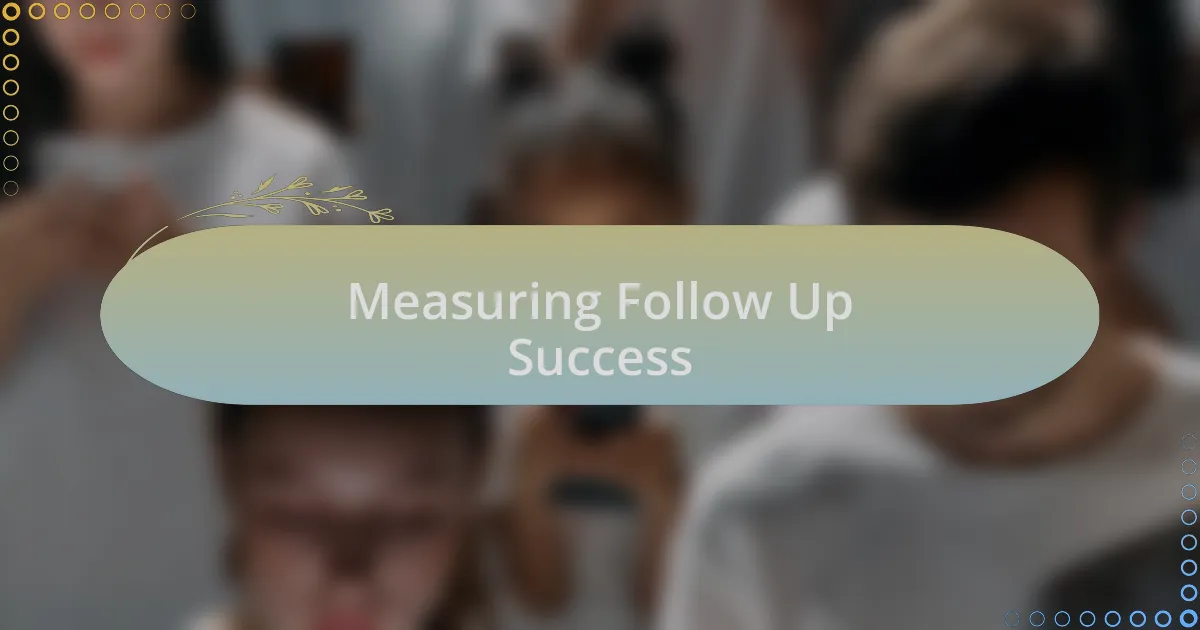Key takeaways:
- Local business networking thrives on genuine relationships and community support, which can lead to mutual growth.
- Effective follow-up strategies, such as personalizing messages and utilizing tools like CRM and task management apps, enhance networking efforts.
- Building long-term relationships requires regular engagement, sincerity, and recognizing significant life events.
- Measuring the success of follow-ups involves tracking responses, assessing long-term outcomes, and analyzing engagement metrics for ongoing improvement.

Understanding Local Business Networking
Local business networking is more than just exchanging business cards; it’s about building genuine relationships that can lead to mutual growth. I remember attending a small networking event where I met a local bakery owner. Our chat about customer retention strategies created a lasting partnership that benefited both of us tremendously. Isn’t it fascinating how one conversation can change the trajectory of our businesses?
Every connection in local networking often unlocks doors we didn’t even know existed. I once collaborated with a neighbor who ran a marketing agency. By sharing insights and resources, we not only expanded our client base but also learned invaluable lessons from each other. Have you ever thought about how your local connections could really amplify your business efforts?
Understanding the dynamics of local business networking means recognizing the value of community support. I often find that the enthusiasm I bring into these interactions sets the tone for positive responses. Why do you think some connections thrive while others fizzle out? In my experience, it all comes down to authenticity—when we approach networking sincerely, the results can be nothing short of magical.

Importance of Follow Up
Following up is a crucial aspect of networking that often gets overlooked. I vividly recall a situation where I met a potential partner at a trade show. After our initial chat, I sent a simple email to check in and share an article I thought they might find useful. This gesture led to a deeper conversation about collaborative projects, demonstrating how a thoughtful follow-up can transform a fleeting introduction into a fruitful partnership. Have you ever considered how a few well-placed words can open new avenues in your business?
The power of follow-up lies not just in preserving connections but in reinforcing the value you bring to them. A few weeks ago, I reached out to an acquaintance to see how their recent product launch went. That small touchpoint sparked a meaningful exchange of ideas, revealing areas where we could support each other. It’s almost magical how showing genuine interest can lead to valuable insights and collaborations. What would happen if you made follow-ups a regular part of your networking routine?
Neglecting to follow up means missing out on opportunities that might enrich your business landscape. I’ve learned that relationships require nurturing; without it, they can quickly fade into obscurity. One time, I forgot to follow up with a potential client, and I later regretted not solidifying that connection. Isn’t it fascinating how a simple act of remembrance can keep the momentum going and promote sustained growth? Taking the time to follow up can be the bridge that connects you to your next big break.

Effective Follow Up Strategies
Effective follow-up strategies can make a world of difference in your networking efforts. I remember attending a local business meeting where I exchanged cards with several professionals. Instead of sending a generic email blast, I personalized my messages based on our conversations, referencing specific points we discussed. This tailored approach not only made my follow-up more memorable but also set the stage for fruitful dialogues afterward.
One strategy I find incredibly effective is using reminders in my calendar to keep track of follow-ups. A few weeks back, I set a reminder to touch base with a mentor I hadn’t spoken to in a while. When I reached out, we ended up chatting for nearly an hour about industry trends, and I realized how easy it is to stay connected with a little proactivity. Have you thought about how simple tools can enhance the way you manage your networking relationships?
In my experience, following up doesn’t always have to be formal—it can be casual yet impactful. Recently, I noticed a colleague sharing insights on social media about a project we had discussed. I took a moment to comment and share how I applied one of their tips in my workflow. This not only kept our connection alive but also encouraged an ongoing exchange of ideas. Isn’t it empowering to think that a friendly gesture can lead to continuous collaboration?
![]()
Tools for Tracking Follow Ups
To effectively track follow-ups, I’ve found that using a customer relationship management (CRM) tool can be a game changer. I started using one after a particularly hectic networking event where I lost track of whom I had followed up with. With a few clicks to log conversations and set reminders, I can easily keep tabs on my network. Imagine how much easier it would be to see at a glance the status of your interactions and the next steps you need to take.
Another tool I’ve come to appreciate is simple task management apps. When I began using one to create checklists for my follow-up tasks, I found that breaking them down made the process less daunting. It allowed me to focus on one connection at a time, ensuring I gave each interaction the attention it deserved. How often do we overlook excellent networking opportunities due to overwhelm? I learned first-hand that organizing follow-ups into bite-sized pieces makes it achievable.
Lastly, I’ve discovered the power of spreadsheets for tracking my follow-up efforts. While it may sound old school, I feel a sense of satisfaction in seeing my progress visually laid out. Each entry serves as a wonderful reminder of the relationships I’m nurturing. It’s a constant motivation: have you ever experienced that excitement when you can check off a completed follow-up? It truly reinforces my commitment to maintaining those connections.

Personalizing Your Follow Up
Building personal connections through follow-ups is essential for meaningful networking. I remember a time when I followed up with a contact by referencing a specific detail from our conversation—like their recent product launch. The joy in their voice when they realized I remembered was palpable. It reinforced the idea that personal touches matter; they can turn a simple follow-up into a memorable exchange.
Tailoring your message is another aspect I find crucial. Just last week, I crafted an email to a fellow entrepreneur, complimenting their latest article and suggesting a collaboration based on shared interests. It sparked an immediate response and deepened our connection. When you show genuine interest and care, it transforms the nature of your professional relationships. Isn’t it fascinating how a few thoughtful words can pave the way for exciting new opportunities?
I also believe that timing plays a vital role in personalizing follow-ups. I’ve learned the hard way that reaching out too late often diminishes the impact. For instance, after attending a workshop, I made it a point to send personalized thank-you notes the very next day. This small effort not only kept our interactions fresh in their minds but also highlighted my dedication to nurturing these relationships. Have you ever noticed that a timely follow-up can create an opportunity that might otherwise be missed?

Building Long Term Relationships
Building long-term relationships in networking requires regular engagement and sincerity. I often think back to a time when I scheduled quarterly catch-ups with a local business owner I met at a networking event. Each meeting wasn’t just about business; we shared updates about our families and hobbies. This connection transformed our professional relationship into a meaningful friendship, highlighting how important it is to invest time in people beyond just initial interactions.
Another strategy I’ve found effective is remembering significant life events. I once sent a handwritten card to a colleague celebrating their promotion, recalling the challenges they overcame to achieve their goals. Their delight in receiving that small token of appreciation underscored how a simple gesture can solidify bonds over time. Have you considered how the act of acknowledging someone’s achievements might strengthen your network in unexpected ways?
Moreover, I’ve realized that consistency is key. I make it a point to regularly share articles or resources that align with my contacts’ interests. Not long ago, I came across an insightful podcast that resonated with a mentor of mine. After sharing it with a note of encouragement, we found ourselves engaging in deeper discussions about the industry. This ongoing exchange fosters a sense of community and trust, essential ingredients for lasting relationships. What strategies have you used to maintain this kind of connection, and how have they worked for you?

Measuring Follow Up Success
Measuring the success of my follow-ups can be exhilarating and often enlightening. When I make a connection, I keep track of the responses I receive, whether it’s an enthusiastic reply or a simple acknowledgement. Recently, I followed up with a potential collaborator after an event, and the quick two-sentence reply I received opened the door to a meaningful partnership. How do you gauge the impact of your messages?
I also like to assess the long-term outcomes of these interactions. A few months back, I reached out to a contact about a community initiative we both care about. That single message not only rekindled our dialogue but eventually led to us co-hosting a workshop. I’ve come to realize that success is not just about immediate replies; it’s about how these interactions can evolve over time. How often do you find that initial follow-ups lead to unexpected opportunities?
Moreover, I sometimes measure success through engagement metrics if I’m using email outreach. For instance, after sending a newsletter to my network, I assess the open and click rates. I remember the surge in interest I noticed when I included a personal story that resonated with my audience. Those metrics tell me a lot about what sparks connection and keeps my network engaged. What indicators do you pay attention to in your follow-up strategy?